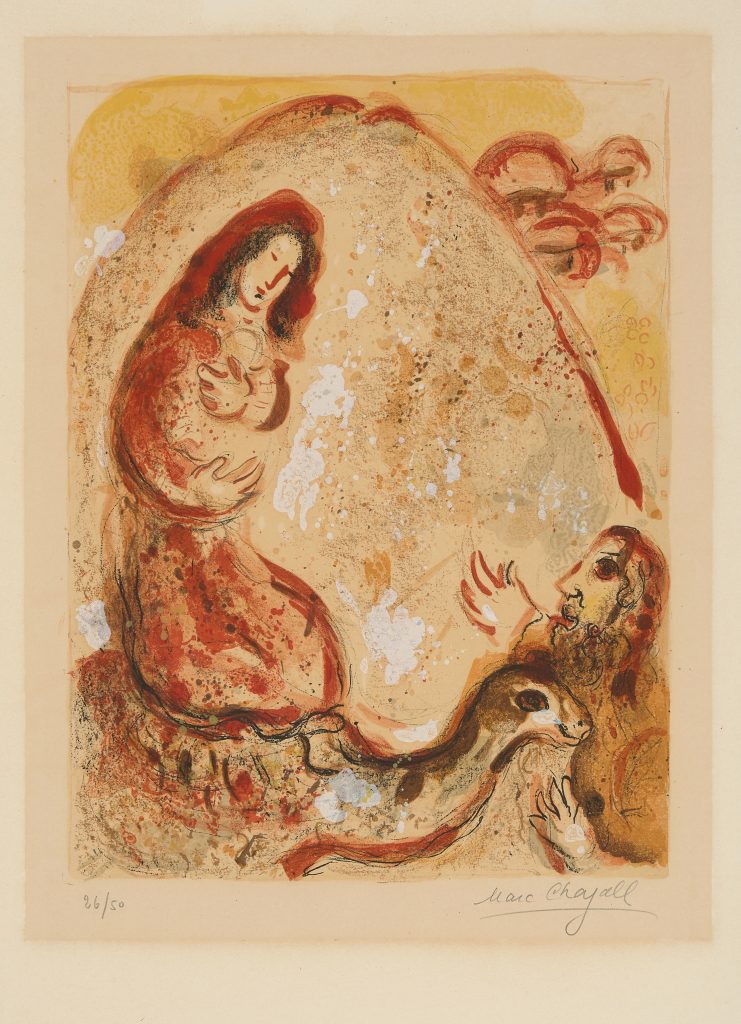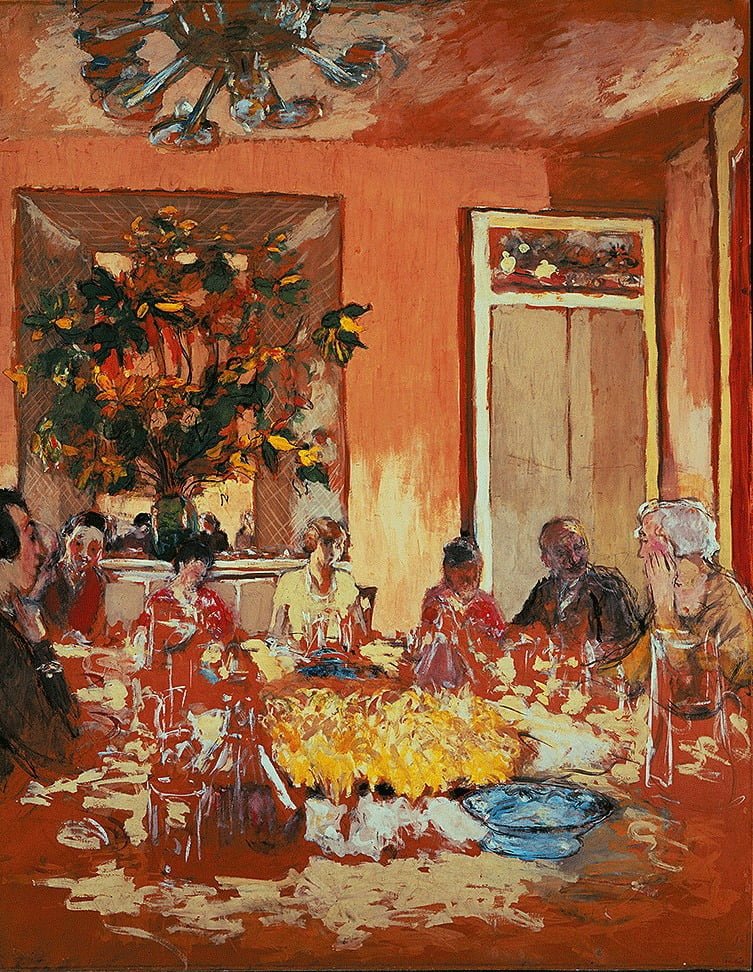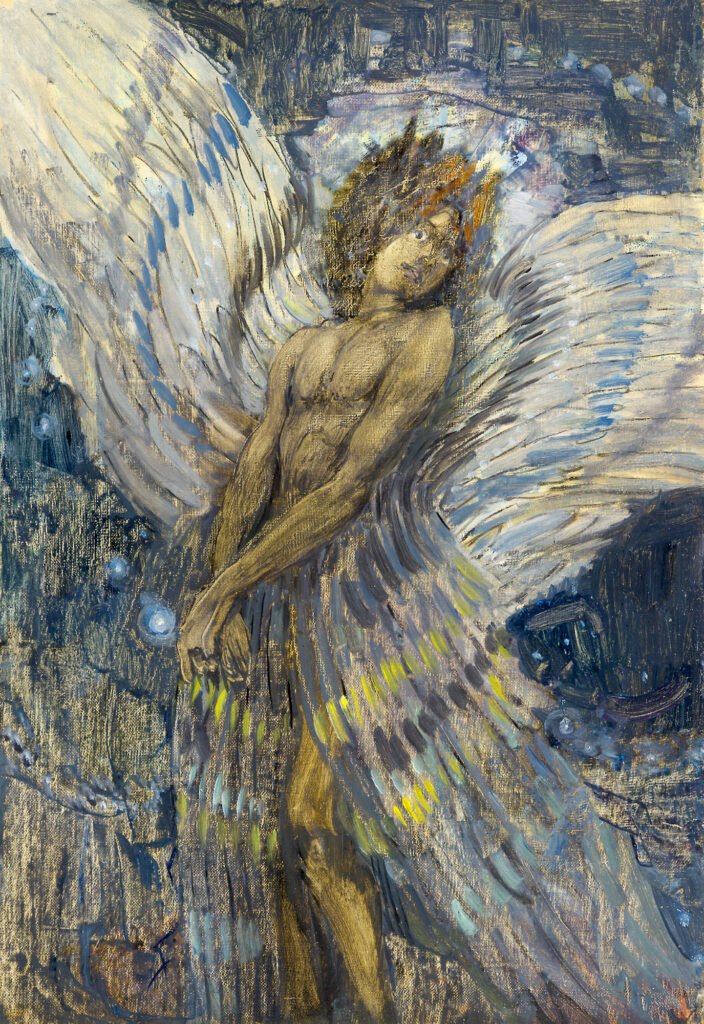Marc Chagall
Rachel dérobe les Idoles de son Père
1960
Sheet size 52.5x38 cm
26/50. Signed in pencil lower right
Marc Chagall (1887-1985) was a Russian-French artist born in Vitebsk, now Belarus. Considered a pioneering modernist, Chagall developed a unique style that blended elements of Fauvism, Cubism, Symbolism, and Surrealism. His vibrant canvases often depicted dreamlike scenes populated by floating figures, animals, and imagery drawn from his Jewish heritage.
Early influences included the folk art traditions of his childhood in Russia. After moving to Paris in 1907, Chagall encountered the Parisian avant-garde, which significantly impacted his artistic development. Themes of love, loss, his cultural background, and personal memories permeate his work. Paintings like “I and the Village” (1911), “The Fiddler on the Roof” (1912), and “Lovers in Flight” (1914) exemplify his signature style.
Chagall’s artistic achievements transcended painting. He created murals, stained glass windows (most notably for the synagogue at Hadassah Medical Center in Jerusalem), sculptures, and ceramics. Throughout his long career, he garnered international acclaim, with major retrospectives celebrating his work.
“Rachel dérobe les Idoles de son Père”, from “Dessins pour la Bible”; published by Editions de la Revue Verve; printed by Drager Freres, Paris and Mourlot Freres, Paris, 1960. Color lithograph. 26/50. Signed in pencil lower right. Sheet size 52.5×38 cm. Without frame.
Marc Chagall’s 1960 lithograph “Rachel dérobe les Idoles de son Père” depicts a scene from Genesis 31. Rachel, identifiable by her blue and white garments, cradles hidden idols while Jacob, her husband, stands beside her. The scene is rendered in Chagall’s signature dreamlike style, with vibrant colors and floating elements like houses and animals. This seemingly fantastical scene portrays a pivotal moment of defiance within the biblical narrative. Rachel’s act of hiding the idols signifies a break from her father Laban’s traditions, potentially symbolizing a rejection of idolatry and a move towards a deeper spiritual connection with Jacob. Notably, the work reflects Chagall’s own grappling with reconciling his Jewish heritage with the artistic movements of his adopted European home.
Provenance:
Private collection, Switzerland
Bibliography:
– Cramer Nr. 42, S. 144-147 m. Abb.
– Gauss, Collection Sorlier Nr. 242, S. 122 m. Abb.





